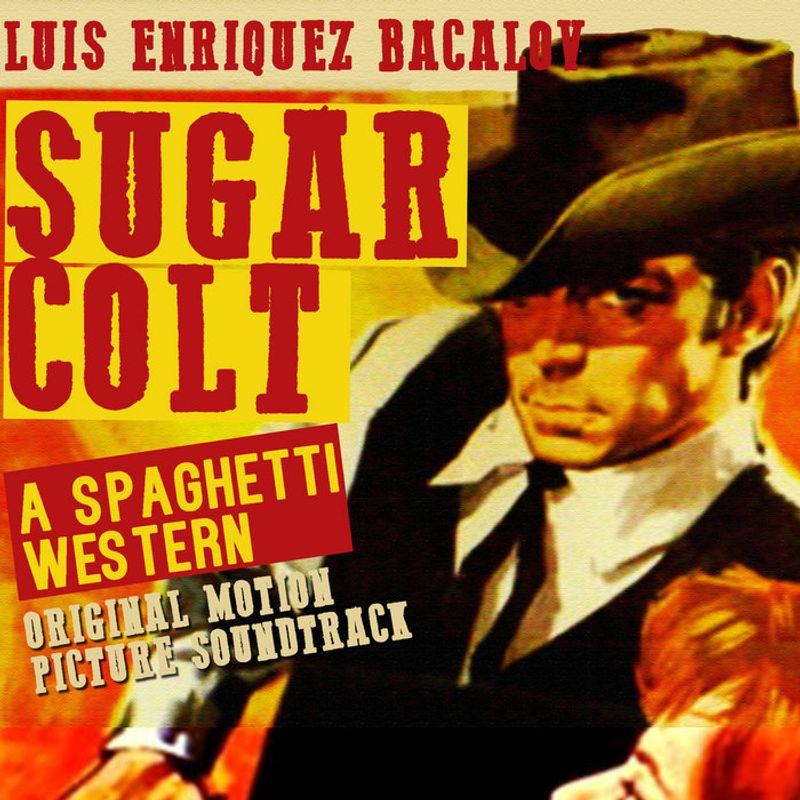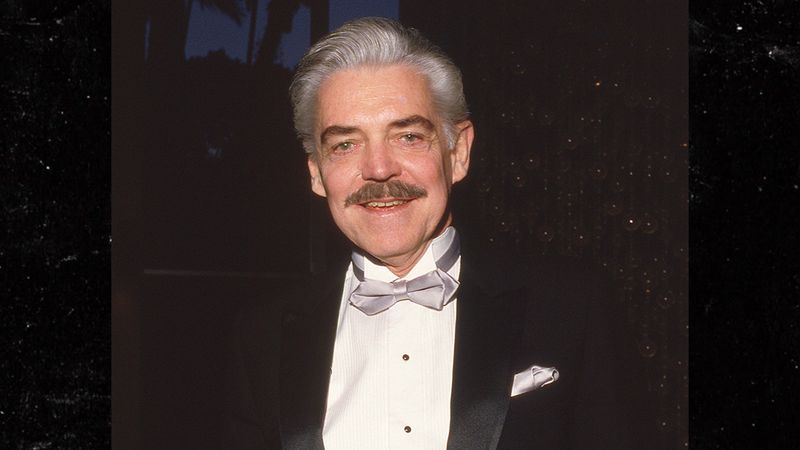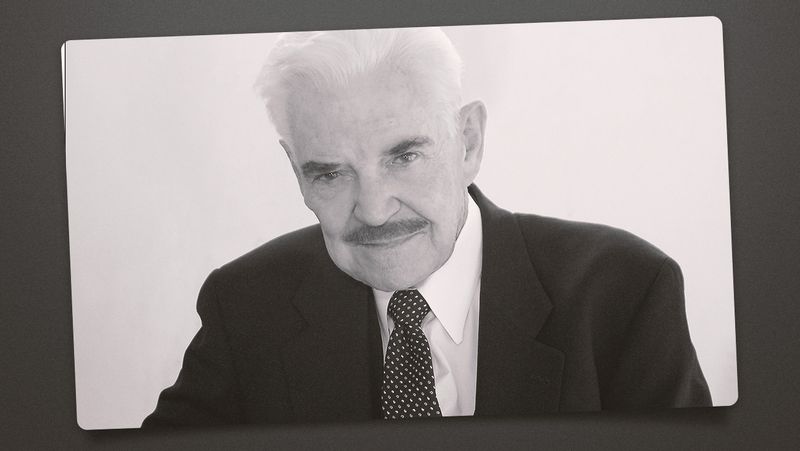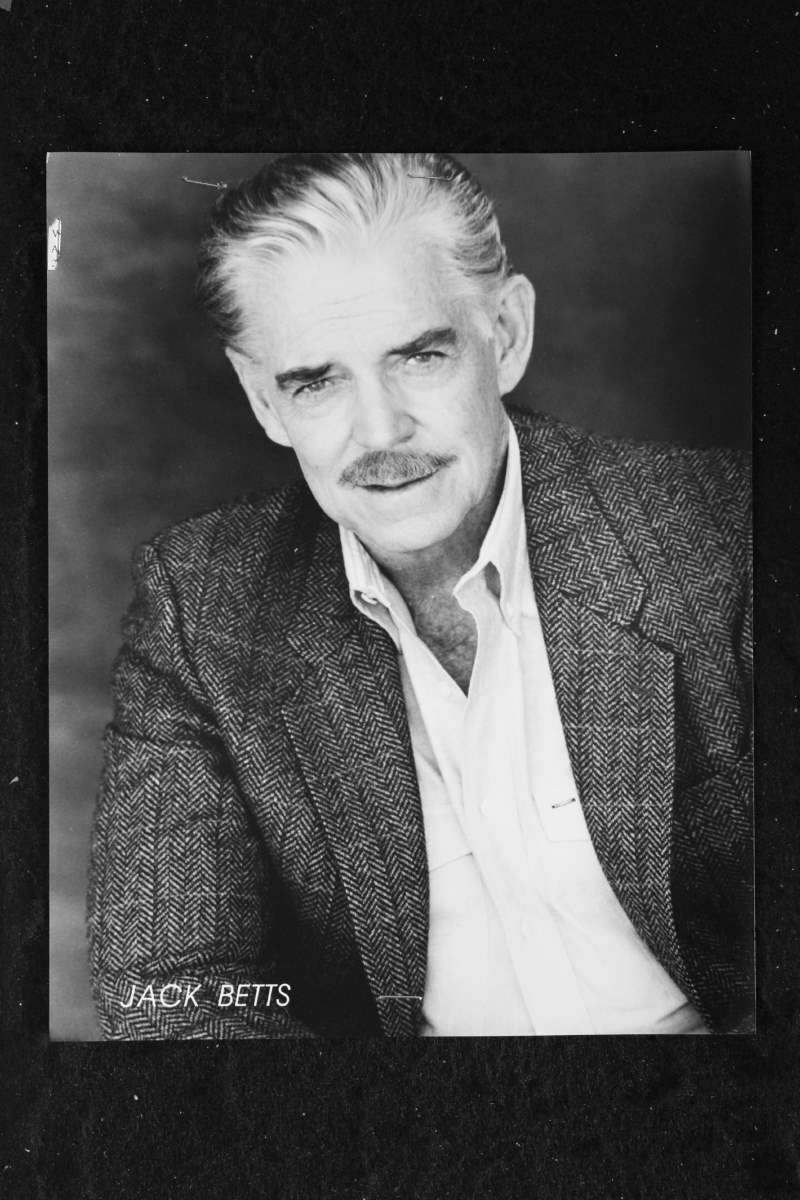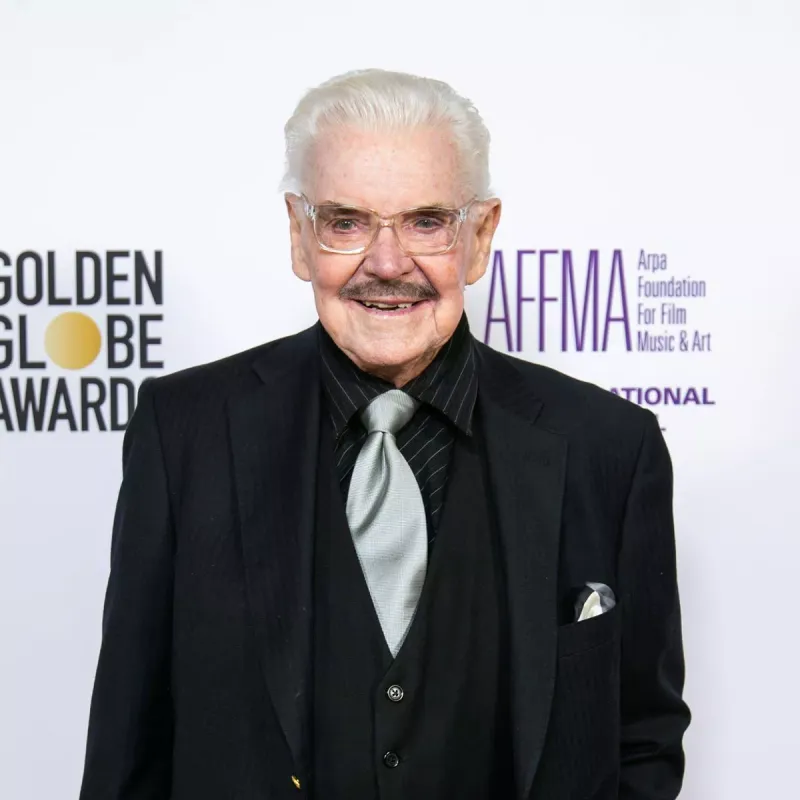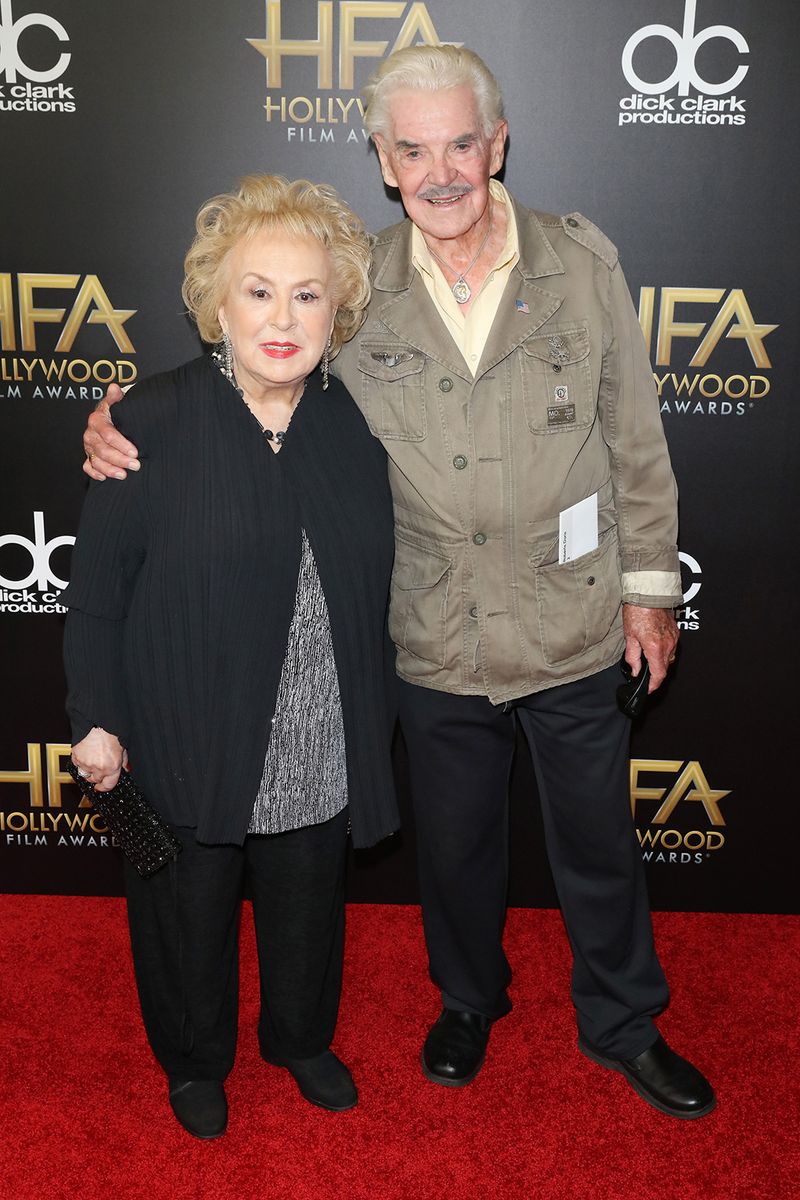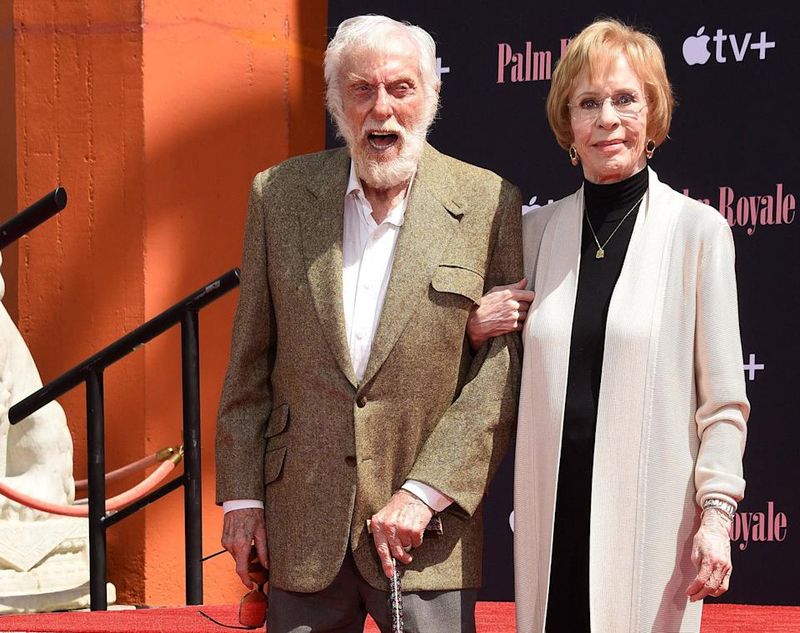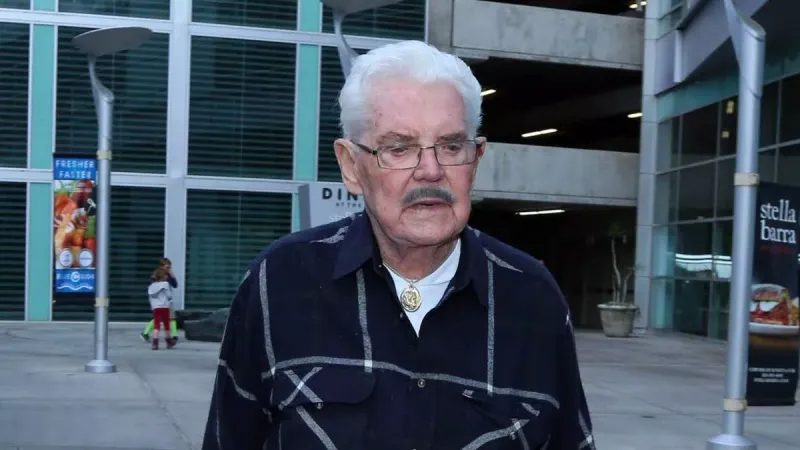Hollywood has lost one of its most versatile and enduring talents with the passing of Jack Betts at age 96. From rugged Western hero to Broadway performer, Betts crafted a remarkable career spanning over six decades across continents and genres.
His journey through entertainment history represents a living connection to Hollywood’s golden age and beyond.
1. Spaghetti Western Icon Under the Name Hunt Powers
The dusty landscapes of Almería, Spain became Jack Betts’ second home during the 1960s boom of European Westerns. Under his rugged alter ego Hunt Powers, Betts galloped into film history alongside Italian and Spanish crews creating distinctly European visions of the American frontier.
These films, with their striking visuals and operatic violence, gave Betts a cult following that endures today. While Hollywood stars like Clint Eastwood found fame in these productions, Betts immersed himself completely in the European film industry, appearing in dozens of these gritty, sun-baked adventures.
2. Leading Man in Sugar Colt (1966)
Brandishing both pistols and charm, Betts delivered perhaps his most memorable European performance in this genre-bending adventure. As Tom Cooper (aka Sugar Colt), he portrayed a retired gunslinger turned detective investigating mysterious disappearances in a frontier town.
The film blended Western action with detective noir elements, showcasing Betts’ ability to be both physically imposing and intellectually sharp. Director Franco Giraldi gave Betts plenty of opportunities to display his athletic prowess in elaborately choreographed gunfights.
Sugar Colt remains a favorite among Euro-Western enthusiasts for its stylish direction and Betts’ charismatic performance.
3. Starred in Django and Sartana Are Coming… It’s the End (1970)
The twilight years of the spaghetti Western era saw Betts take on one of his most action-packed roles. This pulpy adventure paired two of the genre’s most iconic character types – the mysterious Django and the gambling gunfighter Sartana – in a revenge tale bursting with the excessive style fans craved.
Betts brought physical intensity to his performance, executing stunts and shootouts with remarkable energy. Director Demofilo Fidani, known for churning out low-budget Westerns at breakneck speed, found in Betts a reliable leading man who could elevate even the most formulaic material.
The film’s over-the-top action sequences have made it a guilty pleasure for Western aficionados.
4. His Turn as Dracula on Broadway
Broadway audiences witnessed a different side of Betts when he stepped into the cape and fangs of literature’s most famous vampire. His commanding stage presence and resonant voice brought theatrical gravitas to the iconic role, demonstrating his classical training and versatility beyond the screen.
Though his run was brief as an understudy who performed the role several times, theater critics noted his distinctive interpretation that balanced menace with aristocratic charm. The physical discipline Betts developed during his Western film days translated beautifully to the stage, where his movements conveyed both predatory grace and supernatural power.
This theatrical detour highlighted Betts’ range as a performer.
5. A Role in Gods and Monsters (1998)
Bill Condon’s award-winning film about Frankenstein director James Whale provided Betts with a poignant late-career moment. Playing a Hollywood veteran in a story about aging and art, Betts brought authenticity that couldn’t be manufactured – he himself had witnessed the same golden age being depicted on screen.
His brief but meaningful appearance connected viewers to genuine Hollywood history. Working alongside Ian McKellen and Lynn Redgrave, Betts represented a living link to the era being explored in this meditation on creativity and mortality.
The film’s exploration of an aging filmmaker’s reflections resonated with Betts’ own journey through the changing landscape of entertainment.
6. Played Henry Balkan in Spider-Man (2002)
Seventy-three-year-old Betts surprised longtime fans with his appearance in Sam Raimi’s blockbuster as one of the stern Oscorp board members confronting Norman Osborn. The scene provided a wonderful Easter egg for cinephiles who recognized the former Western star now convincingly playing corporate power.
Raimi, known for his appreciation of classic cinema, likely cast Betts with full awareness of his storied career. The moment demonstrated Betts’ remarkable adaptability across eras of filmmaking – from grainy 16mm Westerns to cutting-edge superhero spectacles.
For younger audiences, this might have been their first encounter with Betts, unaware they were watching a living piece of cinema history.
7. Soap Opera Appearances
Television audiences welcomed Betts into their homes through his recurring roles on popular daytime dramas. His appearances on “One Life to Live” and “General Hospital” brought a touch of old Hollywood glamour to the soap opera world, where his dignified presence added weight to dramatic storylines.
Always the consummate professional, Betts approached these television roles with the same dedication he brought to film. Soap opera work demands quick memorization and emotional availability – skills Betts had mastered throughout his varied career.
Many veteran film actors might have considered daytime television beneath them, but Betts embraced these opportunities to connect with new generations of viewers.
8. Worked Alongside Vincent Price
Horror fans treasure Betts’ appearance in “House of the Long Shadows” (1983), where he joined an unprecedented gathering of genre legends including Vincent Price, Christopher Lee, and Peter Cushing. Director Pete Walker assembled this dream team for a deliciously old-fashioned haunted house mystery that celebrated classic horror traditions.
Watching Betts interact with these icons reveals his natural belonging among cinema royalty. The behind-the-scenes stories from this production became legendary, with Price and his costars sharing decades of film history between takes.
For Betts, this project represented another successful genre pivot, demonstrating his comfort in horror’s atmospheric world after years in sun-baked Westerns.
9. Brought Style and Sophistication to Every Role
Colleagues consistently noted Betts’ distinctive elegance regardless of the character he portrayed. Even when playing rough-and-tumble cowboys, he infused performances with an unexpected refinement that set him apart from peers. This signature sophistication became his calling card across genres.
Costume departments appreciated how naturally Betts wore everything from tailored suits to weathered leather dusters. His natural posture and movement elevated the simplest wardrobe choices. Directors valued his ability to bring subtle class to productions of varying budgets and ambitions.
This innate polish likely stemmed from his early theatrical training and personal standards of professionalism that never wavered throughout his lengthy career.
10. Spoke Multiple Languages
Few American actors of his generation embraced international cinema as completely as Betts. His linguistic abilities – particularly his facility with Italian and Spanish – enabled him to work seamlessly with European crews during his spaghetti Western years.
Rather than relying on dubbing like many American stars working abroad, Betts often performed his own dialogue in the production language. This linguistic flexibility made him particularly valuable to international producers and directors. His immersion in European film culture went beyond superficial participation.
Long before Hollywood emphasized global markets, Betts built a truly international career that transcended cultural and language barriers – a remarkably modern approach for his era.
11. Trained at the Actors Studio
The rigorous method acting techniques Betts absorbed at the legendary Actors Studio formed the foundation of his approach to performance. Studying alongside future icons under Lee Strasberg’s demanding tutelage, Betts developed the psychological depth that would distinguish his work from mere genre entertainment.
Even in action-oriented Westerns, viewers can spot the careful character choices and emotional authenticity that marked Studio-trained actors. This formal training separated Betts from many contemporaries working in similar films.
Throughout his career, Betts maintained connections to the theatrical world that nurtured his early development, occasionally returning to stage work to refresh these foundational skills.
12. Acted Well Into His 90s
While many of his contemporaries retired decades earlier, Betts maintained an active career well into his ninth decade. His final credited role came at age 93 in the 2022 film “Nowhere to Hide” – a remarkable testament to his enduring passion for performance and physical resilience.
Aging gracefully on screen, Betts embraced character roles that capitalized on his distinguished appearance and wealth of experience. Younger directors sought him out not just for his historical connection to classic cinema but for his continuing skill as a performer.
This extraordinary longevity places Betts in rare company among actors whose careers span nearly the entire history of talking pictures.
13. A Favorite at Genre Film Festivals
The revival of interest in spaghetti Westerns brought Betts unexpected late-career recognition at specialized film festivals across Europe and America. Audiences thrilled to hear firsthand accounts from someone who had actually ridden horses alongside Franco Nero and witnessed the genre’s golden age.
Festival organizers discovered Betts to be an ideal guest – articulate, full of colorful stories, and genuinely appreciative of fan interest in films once dismissed as disposable entertainment. His appearances often included screenings of rare prints and enthusiastic autograph sessions.
These events allowed Betts to witness how his work had developed cult appreciation among new generations of cinephiles.
14. A Gentleman Off-Screen
Rare in Hollywood’s often ego-driven environment, Betts maintained a reputation for exceptional courtesy and professionalism throughout his lengthy career. Crew members from his earliest films to his final roles consistently described working with him as a pleasure – no prima donna behavior, no tantrums, just dedicated craftsmanship.
This gentlemanly approach extended to his personal life, where friends and family knew him as thoughtful and generous. Young actors who worked with Betts in his later years often mentioned the valuable advice he offered without condescension.
His old-school values of punctuality, preparation, and respect for everyone on set became increasingly appreciated as these qualities grew rarer in the industry.
15. Left Peacefully in His Sleep at 96
The final scene of Betts’ remarkable life played out with quiet dignity at his Los Osos, California home on January 3, 2025. His nephew Dean Sullivan confirmed that the actor passed peacefully in his sleep – a gentle ending for a man who had enacted countless dramatic deaths on screen throughout his career.
Friends noted the poetic timing, as renewed interest in his work had been brewing among film historians and streaming platforms introducing his classics to new audiences. Betts left behind no spouse or children, but a vast extended family of colleagues and fans touched by his work.
The entertainment industry lost not just a versatile performer but a living connection to cinema history.


